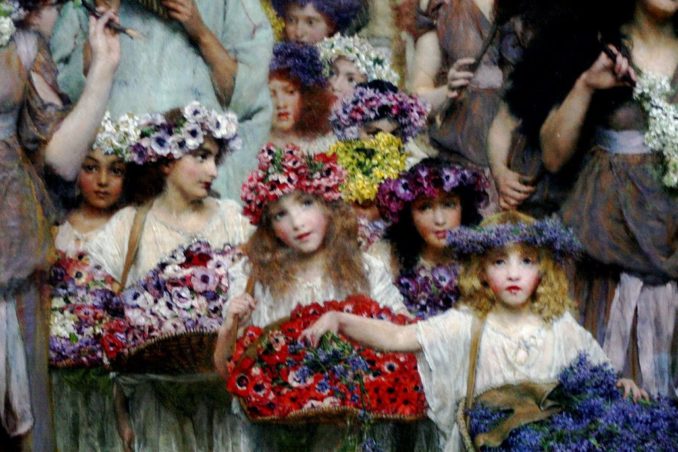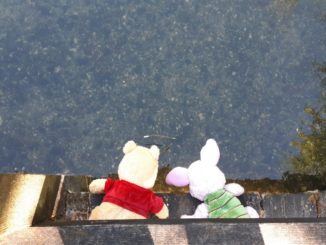
Richard and Caroline had gone to Wales for their holidays. Caroline had made her disappointment clear at having to miss their annual visit to Greece, due to the pandemic, but Richard was secretly relieved: he hated the fuss and noise of travel, especially since the ridiculous ‘arrive 4 hours before’ and other security measures had been brought in. They booked a small holiday cottage in a quiet village, not far from the main town for the area, so that Caroline could do some retail therapy if she got too bored with Richard’s ‘interminable trailing around ancient ruins’, as she put it.
The day after their arrival, Caroline discovered that the local town had a large branch of her favourite kitchenware shops and, declaring it to be too cold for the beach, she had taken herself off in the car after arranging to pick Richard up from a nearby visitor attraction, signposted as a medieval tower house.
He walked through the village, following a narrow grassy lane with high hedgerows until he came to a walled garden, with the sign at the gate declaring itself to be Ty Y Wraig Flodau, helpfully translated as the House of the Flower Lady. He paid the entrance fee to the elderly gentleman at the desk, picked up a visitor’s brochure and after spending some time looking around the principal rooms, walked down a flagstone corridor to a large courtyard, where the brochure suggested the visitor end their tour. Richard thought he had never seen a more attractive building of its type. The courtyard was enclosed on all sides by four long, low ranges, with a small tower at each corner. The centre of the courtyard was laid to grass; a ring of apple trees surrounding a stone well with a circular slate seat running around it. Built all of limestone and slate, mellowed by golden lichen and cushions of green moss, the building had a feeling of ancient stillness and silence.
Richard sat down at the well and breathed in the cool air, faintly scented by the white and pink blossom still on the trees. It was one of those May mornings which held the freshness and promise of spring, all high blue sky and birdsong, and the sun shining through leaves of new green. He was reading the about the history of the building – a rare survival from earlier medieval times, unspoilt by a later makeover – when he became aware that someone else had walked into the courtyard. He looked up and saw a woman smiling at him.
“I’m sorry to disturb you,” she said, “You looked deep in concentration. I’ve just come out for a moment. May I join you?”
“Of course,” Richard said, “I was just reading up about the place. Do you work here?”
She sat down a little way along the curving seat. “Sort of,” she said, “I keep the record of the Flower Lady truthful for visitors, for those who would hear it.”
Richard thought that was a strange way of describing what sounded like a researcher’s or an archivist’s job, but she was looking at him intently, and he found that he would like to hear more. Later, if he had been asked to describe her, he would have said, “Average height, slim, dark hair, dark eyes, and pale skin, dressed in a long cream linen dress with a green woven belt. Nice bone structure. A silver necklace set with light yellow enamelled flowers – might have been primroses. Pleasant voice to listen to – quiet and clear.”
“I would like to hear it, if you have the time,” he said, “Much more interesting than picking it up from a leaflet”.
She smiled again and began. “There are many versions of the Flower Lady legend”, she said, “Mostly written by men, so don’t take offence if I say that they might not tell the whole truth. History is written by the conquerors, after all.”
Richard smiled back, and he noticed that she had the darkest grey eyes that he had ever seen, flecked with warm amber.
“The legend goes back to the early days of our nation. The short version most often told is that the magicians, Math and Gwydion, created a beautiful woman from nine flowers, amongst which were oak, broom, primrose and meadowsweet. They named her after the flowers of which she was made, and gave her in marriage to the hero, Lleu. She later betrayed him with his friend Gronw. They fought, Gronw was killed and the lady turned into an owl as punishment.”
“And what’s the real version?” asked Richard.
“There was more to it than that, you might not be surprised to hear. Lleu was always going on his travels, leaving her restless and lonely. She had been created for him, and could not understand his absences. One evening, she was alone in their home when a hunting party, led by Lord Gronw, approached. He was curious to see the lady, and used his request for shelter for him and his party as a pretext to do so. Over the next few days he wooed her in all the subtle ways that such men use, and she fell in love with him. Lleu came back and she confessed what had happened. There was a fight, there usually was in such cases, and Gronw perished. But the lady was not turned into an owl, that came with the later stories; she was always flowers, first and last.”
“You tell the story as if you were there,” Richard said.
“Such stories are always better told from the heart,” she said, “But we have another visitor: this is your wife, is it not?”
Richard turned his head and saw Caroline hurrying towards him from the courtyard entrance. “Hurry up, Richard!” she said, “I’ve booked us a table for lunch in that restaurant you wanted to visit.”
“Hi Caro. This is…….” he realised he didn’t know the woman’s name and, turning back, saw with a queer chill that the seat was empty.
“Talking to yourself again?” Caroline said briskly, “Honestly, what are you like? Come on, we’ll be late.”
If you would like to read more about the Flower Lady legend, I can thoroughly recommend Alan Garner’s ‘The Owl Service’.
© Madam Revenant 2020
The Goodnight Vienna Audio file



